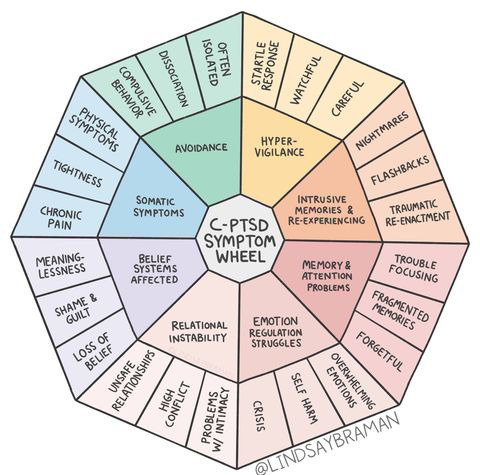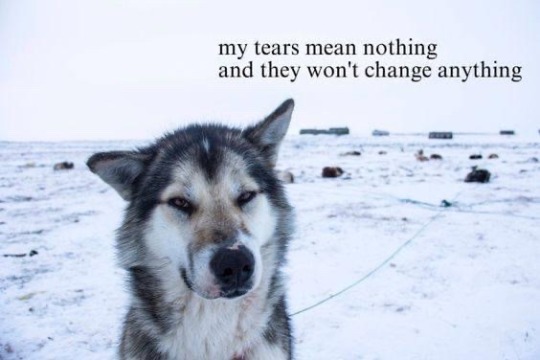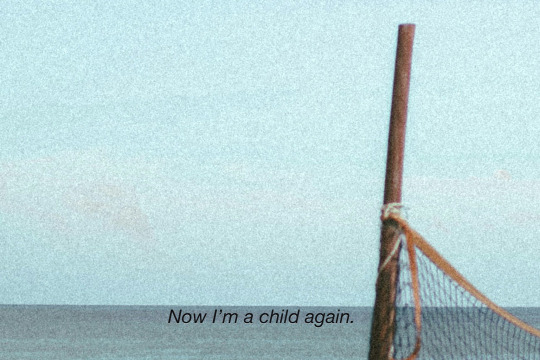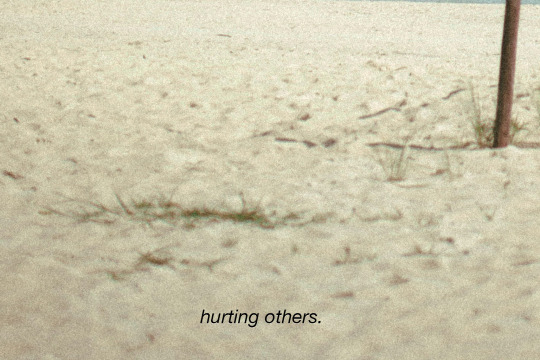Text
In short, trauma is about loss of connection ⎼ to ourselves, to our bodies, to our families, to others, and to the world around us. This loss of connection is often hard to recognize, because it doesn't happen all at once. It can happen slowly, over time, and we adapt to these subtle changes sometimes without even noticing them.
⎼ Healing Trauma by Peter A. Levine
9 notes
·
View notes
Text
in all seriousness it's very alienating knowing theres Something Wrong With You. like seeing your mental illness come through in your behaviour and thought processes and knowing it's irrational and unhealthy, knowing other people are reading you as weird or stupid, and not being able to do anything about it is such a lonely experience
156K notes
·
View notes
Text
12 really does feel like the universal traumatic age for everyone. Like one day we were all 11. Then something happened to us
4K notes
·
View notes
Text
it's really difficult watching people half your age become the people they were meant to be
i know that we are constantly evolving and changing, but when you are stunted because of trauma, and time keeps moving on, you continue to watch from the sidelines, forever a passing acquaintance, a blurred landscape flashing by through a train window
and when you have spent so much of that time dreaming of a reality where you could be who you wanted, but it was only in your head, and it continues to be only in your head, does that mean you also have to grieve the years lost to believing you could be different than this?
#this disorder hijacked my true self#when i was just a kid#i often wonder who i would have loved#and who would have loved me#had my original self not been hijacked#avpd
9 notes
·
View notes
Text
Emotional Regulation- what's it all about?


Emotional regulation is the work of releasing pent up stress from your nervous system.
Your body has an entire system of automatic stress responses. Some of which can be born out of hard wired prolonged exposure to trauma in our childhoods.
With no proper regulation from our abusive & neglectful parents, many of us are still stuck in these same fear responses from our childhoods. Which means a lot of that fear, sadness, guilt, and shame, reappears in the form of how we cope now as an adult.
By learning how to recognize which state of survival you're in- and you can be in all states at different times and triggers- you can then work on giving your body a more directed route to releasing the pent up exhaustion, fear, tension, and panic.
Which in turn gives us more room to breathe easier when we are feeling stress, panicked, and triggered.
There are many techniques to help with emotional regulation. Somatics is the practice of moving your body to release the energy.
This is why everyone will scream yoga and exercise at you. But its not just limited to those two types of movements.
If you are bed bound, somatics can be as simple as raising your arms, lifting your legs, and rolling your neck.
The key idea is to recognize when you're overwhelmed, panicked, and triggered in your day to day life. Work real hard on bringing these moments into your awareness. What are your thoughts like? What are your reactions?
From there we work to integrate a basic somatic framework over time. This can look like working hard to incorporate some form of comfort, movement, and acceptance for the physical discomforts of these moments.
A basic framework can include:
Butterfly hugs (put ur hand over ur heart)
Self hugs
Hold your shoulders
Rub your shoulders, arms, tummy, and legs
Lift ur shoulders, shake ur arms, clench ur fists
Wiggle in ur seat
Raise ur legs, stomp your feet gently in place, roll ur ankles
Deep breathing
Groaning, sighing, screaming, making noise
Humming or singing
Outwardly showing emotions on your face
Cold/warm compress or towel
Weighted blankets or comfort items
Sensory stems
These are just a few examples. You can literally do whatever types of movements that feel natural for you.
The secondary idea of emotional regulation is self expression.
That's why it's okay to groan and scream and be loud and expressive in these moments, if you need to. Remember that most often panic attacks, stress, anxiety, and triggers are deeply emotional responses to very personal scenarios and traumas that we have endured in our past. Some of these fears stem from some really scary places. It makes a lot of sense that you might need to scream, cower in fear, or use facial expressions in these moments.
Oftentimes in abusive environments we are restrained from doing so by our abusers. When in reality, these are the standard reactions for what we went through. These are the types of reactions that our bodies are repressing.
It can feel overwhelming to think about acting in such ways, especially if you're not able to practice these in peace, solitude, and safety. But please know that how you cope is an extremely personal and extremely precious part of who you are. Do whatever you need to do for your health and safety and stability and peace of mind. That should be the main goal.
One last thing about emotional regulation to remember, is that the goal is to not be "happy" or at a "peaceful baseline" all the time.
The goal is to allow the anger, allow the sadness and grief and all other emotional signals in-- and then express them in healthier ways than what you're doing now.
Because at the end of the day, groaning and pitching an intended hissy fit in the privacy and safety of your own home, is a much better and healthier way to cope than hurting yourself.
Allow your inner teen the proper emotional outlets your parents stole from you.
This is the work of emotional regulation.
[self regulation chart source- primaltrust-official]
"The Autonomic Nervous System (ANS) communicates to us through our feelings and our sensations in the body. By learning how to recognize our ANS states, we can become better equipped with knowing what we can do to help ourselves in times of discomfort or distress.
Many people are aware of the fight/flight state, but there is often confusion with freeze and shut down states, which are actually different.
Dorsal vagal shutdown is a state of parasympathetic collapse, and because of this, a little movement and stimulation of the vagus nerve (since this nerve governs the parasympathetic response) is helpful. On the other hand, a freeze state is a mixture of sympathetic and parasympathetic (the dorsal vagal shutdown) immobilization, which to our nervous system is like having a foot on the gas and a foot on the brakes at the same time. In this state, the nervous system needs to be shown safety, so it can come out of paralysis, relax and then move energy as needed.
A telltale physical sign of being in freeze is having very tight, sore muscles, or noticing you are 'bracing' in your body, as if preparing for impact. Panic attacks can also occur in the state, which is a step beyond the anxiety experienced and fight/flight.
The aim of all the suggested exercises in this post is to help the body come into a healthy (not dorsal vagal shutdown!) parasympathetic state- ventral vagal- but to get there, you might journey from freeze to fight/flight for example, or dorsal vagal to fight/flight. This is very normal and can be explained wonderfully by the Polyvagal Ladder (see the teachings of Deb Dana for more). The goal is to not be in ventral vagal all the time. Our nervous system is highly intelligent and will flow between states as needed, thus the aim is to allow this flow, versus getting stuck in any shut down, freeze, or fight/flight state for too long."
[C-PTSD symptom wheel source- Lindsay Braman]
"This new C-PTSD symptom wheel resource is a tool for education and for advocacy.
The World Health Organization's diagnostic criteria for Complex Post-Traumatic Stress Disorder are split into 8 distinct categories. These categories were mapped by Dr. Wei-May Su and Dr. Louise Stone in an Australian medical journal in 2020. Simplifying and then building off their work* to highlight specific ways these symptom categories show up in a survivor's life, I've created this radial chart showing how the constellation of symptoms experienced by survivors of complex trauma can be organized under the heading of C-PTSD.
I often avoid creating art that can be used for diagnosis or self-diagnosis, but the fact is, resources and awareness are desperately needed on the topic of C-PTSD. See, although it has been recognized by the World Health organization since 2020, the USA's diagnostic manual, the DSM-5, doesn't include C-PTSD. Because it's omitted from the DSM, many therapists aren't trained to recognize it or treat it. Insurance won't cover treatment, and too often people get misdiagnosed and given ineffective treatments.
Historically, mental health providers haven't done a great job of understanding and categorizing experiences of complex trauma survivors, but through education and advocacy, we can change that."
🌸🌸🌸🌸🌸🌸
Hope this helps
🌸🌸🌸🌸🌸🌸
75 notes
·
View notes
Note
Schizoid culture is wondering if I'll even care to have a relationship with my kids in the future. I love them, and I'll do whatever I can for them, but will I care if they move far away? If they stop talking to me? Will they even want to have a relationship with me when I can't give them the emotional aspect that's so important? That I'm not capable of.
-
#oh this is me but with my parents#i feel this very much with my parents#i already just dont talk to my dad#and if i moved away from my mom i wouldnt call#i wouldnt really even think about her#and it feels so bad like i know i should care deeply but i dont#szpd
19 notes
·
View notes












